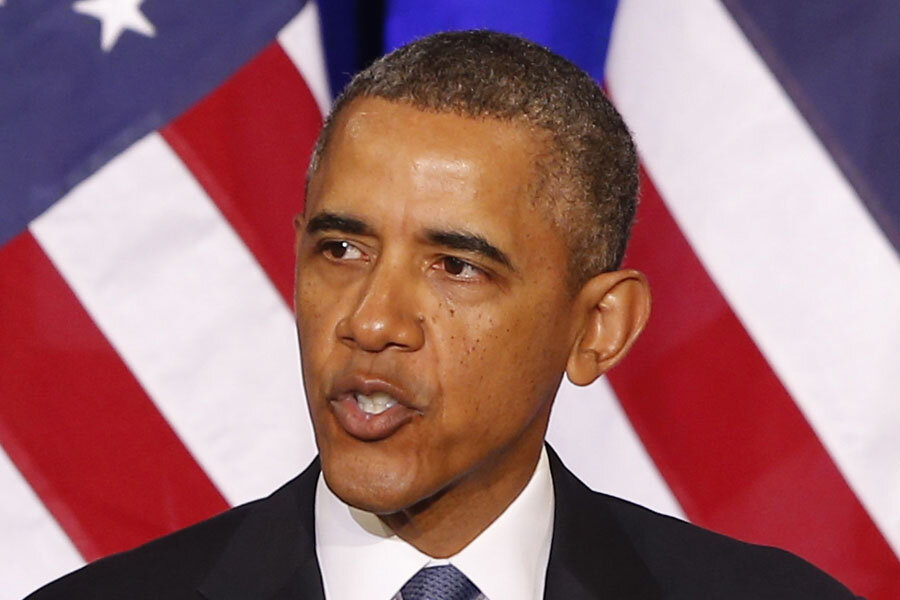Obama's poor poll numbers: What do they mean for Democrats?
Loading...
With his State of the Union speech only five days away, President Obama faces poll numbers that remain pretty blah. The good news for the White House is that voters still appear to believe he’s a nice guy. The bad news for him – and the Democratic Party – is that a plurality of Americans still say he’s not doing his job well enough.
A new Associated Press/GfK poll demonstrates his residual personal appeal. Fifty-eight percent of respondents said Mr. Obama is very or somewhat likeable. That’s an increase of nine percentage points since the end of the partial government shutdown in mid-October.
But there’s a cliché about where nice guys finish. Hint: It’s not first. That’s reflected in AP’s numbers, in that only 31 percent find Obama to be an outstanding or above average president. Forty-two percent rate his presidency as below-average or poor. Twenty-five percent say it's average.
A just-released CBS survey contains numbers that are better for Obama, but only just. It shows Americans almost exactly split on his merits, with 46 percent approving of Obama’s job performance, and 47 percent disapproving.
CBS notes that these numbers put Obama in a slightly better position at this point in his second term than George W. Bush. But he’s less popular than Bill Clinton and Ronald Reagan were at the start of their second terms, by a fair bit. Reagan’s approval rating in January 1986 was 65 percent.
Various poll results make this much clear: Obama’s approval rating remains underwater. According to the RealClearPolitics average of major polls, 51 percent of Americans disapprove of Obama’s performance and 43 percent approve.
The president is not going to face voters again, of course, so for him these figures are to a certain extent irrelevant. But they could affect the Democratic Party as a whole, potentially making it even harder for Obama to get initiatives through Congress.
RealClearPolitics political analyst Sean Trende crunches the numbers on this in a long piece that’s attracting attention among experts at the moment. In short, Mr. Trende says there’s a relationship between the level of presidential approval and the vote share of the president’s party in congressional races. Applying Obama’s current numbers to the 2014 electoral landscape produces a mild surprise, says Trende: Right now it’s possible, even likely, that Republicans will win control of the Senate.
“If the president’s job approval is still around 43 percent in November – lower than it was on Election Day in 2010 – the question would probably not be whether the Democrats will hold the Senate, but whether Republicans can win 54 or 55 seats,” writes Trende.
Trende adds that he does not believe the “journalistic narrative” has caught up with the deterioration in Democratic electoral prospects for the Senate. That may be – but some other electoral experts are beginning to echo his findings.
University of Virginia political scientist Larry Sabato’s “Crystal Ball” newsletter issued Thursday favors Republicans in four Democratic-held Senate seats that are up in November: Montana, South Dakota, West Virginia, and Arkansas. Three other states with Democratic incumbents – Alaska, Louisiana, and North Carolina – are toss-ups, according to the “Crystal Ball.”
A number of factors will affect the outcome of these races, including who the actual candidates are.
“But it may also just be that midterm 2014 will simply produce a leveling effect, where overextended Democrats – they hold seats in seven states Mitt Romney won in 2012, while Republicans hold only one President Obama-state seat – simply lose some seats that, in a politically polarized era, they don’t have much business holding, particularly with a potential drag coming from an unpopular Democratic president in the White House,” write Larry Sabato and associates Kyle Kondik and Geoffrey Skelley.






